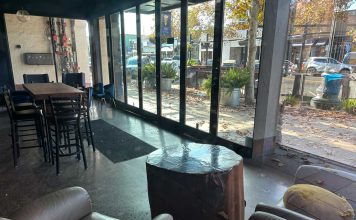Huge Indian-owned casinos in urban centers. Local voters having
little or no say in whether they are built. More and more
poverty-level Californians getting easy access to gaming halls
where they can drop what little money they have – on the off-chance
they might get rich quick.
Huge Indian-owned casinos in urban centers. Local voters having little or no say in whether they are built. More and more poverty-level Californians getting easy access to gaming halls where they can drop what little money they have – on the off-chance they might get rich quick.
It’s almost as if Gov. Arnold Schwarzenegger and the state legislators who just okayed most of his compacts with casino Indian tribes had read the ballot arguments against the 1998 Proposition 5 and the year-2000 Proposition 1-A and decided to make most of them come true.
The largest of the new or enlarged gambling palaces Schwarzenegger okayed will eventually belong to the 259-member Lytton Band of Pomo Indians. It ‘s operators will include well-entrenched gaming interests and it will enrich the cash-strapped East Bay town of San Pablo, while having yet-unknown effects on ghettoized neighboring Richmond. Lawmakers will consider and almost certainly approve a reduced version of the Lytton plan when they reconvene this winter.
Schwarzenegger and the Lyttons at first aimed to put 5,000 slot machines – more than any current American casino possesses – in the East Bay city of San Pablo, a short drive and a medium-length bus ride from San Francisco and Oakland, both with large poverty-level and near-poverty populations. That would have put $100 million a year into the state’s coffers and hundreds more cars daily onto the already-choked Interstate 80 freeway
The Lyttons now will likely have to settle for a project half the size of what Schwarzenegger agreed to, chiefly because of environmental concerns. The governor whined that he couldn’t stop the casino because Congress earlier granted the Lyttons the right to buy land for their project. Had everything gone forward as agreed to, the landless Lyttons – with absolutely no historic connection to San Pablo – would soon have had the biggest gambling palace anywhere.
The downsides that aroused Bay Area lawmakers to cut the Lytton casino plan are precisely what original critics of Indian gambling predicted in their 1998 ballot arguments.
“Indian tribes could purchase land OFF their reservations and open huge casinos wherever they want in California,” said the 1998 argument against Proposition 5, signed by former state Attorney General John Van de Kamp, a Democrat, and former Republican state Sen. Bill Campbell of Whittier, among others.
“All (the tribes) need is the approval of … politicians … There is no local vote of citizens to authorize or reject these casinos,” the argument continued. That argument warned against gambling without representation – exactly what prevails in California today.
As it turned out, the Lyttons began their campaign for an urban casino the moment voters passed Proposition 1-A, which expanded on Proposition 5 and passed in the March 2000 primary election. It took years for them to win approval from Congress and the federal Interior department, but only a few months of negotiating to win over Schwarzenegger.
Money was the main reason he approved what could have been the largest casino project anywhere.
Now Californians must think about whether it’s a good idea to authorize new casinos or allow existing ones to expand – precisely the issue to be decided this November via Propositions 68 and 70 – in exchange for a portion of their profits and slightly less pressure for new taxes.
Maybe he’s really not the governator, a term he finds fantastic, but rather just plain old Gov. Gelt.











